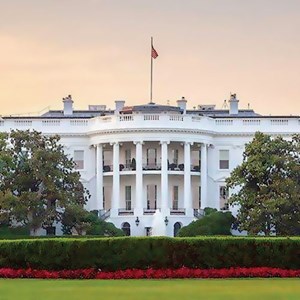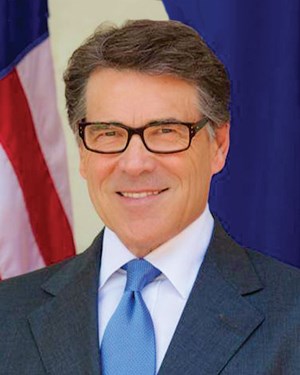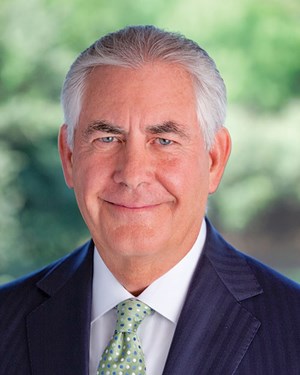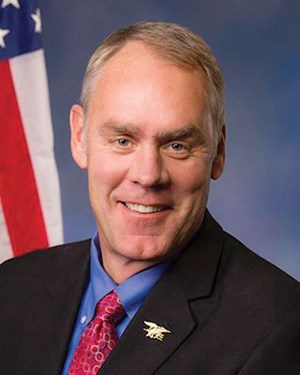A new day dawns in D.C. for the U.S. E&P industry
“Nothing is so painful to the human mind as a great and sudden change.”--Mary Shelly
To the utter shock and surprise of pollsters, pundits, and assorted “experts,” Donald Trump won the 2016 presidential election in the biggest upset since 1948. It was hardly a landslide since, while Trump won the Electoral College and the presidency, Hillary Clinton won nearly 3 million more popular votes, and the Democrats gained two Senate seats and six seats in the House of Representatives (Editor’s note: The popular vote is a distorted picture—if one takes the immensely Democratic states of California and New York out of the equation, then Trump won the rest of the country by 3.13 million votes.)

Nevertheless, for the next two years, at least, Republicans will control the Executive and Congressional branches of the Federal government—and will be able to appoint Supreme Court judges. This has potentially profound significance for the U.S. oil and gas industry, and bodes well for the future of fossil fuels.
Trump made numerous campaign promises to increase U.S. oil and gas output, and rescind harmful regulations. He already has initiated a policy departure from former President Obama, who spent much of his political capital over the past eight years promoting environmental priorities, renewable energy, and policies to combat climate change. Trump wasted little time, stating two weeks after the election that he planned to undo many Obama administration energy regulations on his first day in office. “Obama’s onslaught of regulations has been a massive self-inflicted economic wound denying Americans access to the energy wealth sitting under their feet,” said the President. “This is the American people’s treasure, and they are entitled to share in the riches. I will cancel job-killing restrictions on the production of American energy— including shale energy and clean coal—creating many millions of high-paying jobs.”
He also plans to undo two regulations for every new regulation issued. Trump will likely target Department of Interior and Environmental Protection Agency (EPA) regulations on methane emissions from oil and gas operations; hydraulic fracturing; and restrictions on drilling in federal waters. His actions, taken immediately after being sworn into office, indicate that he is serious.
ENERGY POLICY PRIORITIES
Trump’s energy plan and immediate actions indicate that he will focus on these policies of interest to the industry:
- Climate Change. One of the most salient contrasts between the Obama administration and the Trump administration is on “global warming.” This was evidenced at noon on Jan. 20. As soon as Trump was sworn in, the White House website was revised to remove all references to “climate change.” The only mention of climate on the new White House website is under Trump’s “America First Energy Plan,” in which he vows to undo Obama’s Climate Action Plan.
- Paris Climate Agreement. Trump has promised to cancel the agreement and cease funding U.N. climate programs. Because it is not a treaty, and was not ratified by the Senate, Trump is not obligated to adhere to pledges that Obama made. Prior commitments to emission reductions or funding for the Green Climate Fund will be moot.
- Federal oil and gas leasing. Less than 3% of federal offshore areas are leased for development. Trump can increase leasing in the Chukchi and Beaufort Seas, and the mid- and South Atlantic. Onshore, there will be increased leasing, in places like the National Petroleum Reserve-Alaska, and federal lands in the west.
- Pipeline infrastructure. Obama halted the Keystone XL and Dakota Access pipelines. Trump promised to reverse this, and work to streamline and expedite pipeline permitting. Less than a week after being inaugurated, he signed Executive Orders to revive both pipelines. Trump also signed an Executive Order to expedite environmental reviews of other infrastructure projects. Under the order, a determination on whether a project is “high priority” should be made within 30 days, and those projects should receive “expedited procedures and deadlines” for approvals.
- LNG export terminals. Obama slowed the review of LNG export terminals. Under the Trump administration, approvals will be expedited, as indicated in his Executive Order to expedite approvals of infrastructure projects.
- Clean Power Plan (CPP). This regulation is before the D.C. Circuit Court. Even if it is upheld, the Trump administration will likely issue a new regulation withdrawing the CPP. Also, regulation of CO2 emissions from new power plants will likely be withdrawn, as well.
- “Endangerment Finding.” The Obama administration found that greenhouse gas emissions (GHGs) harmed human health and welfare. This is the regulatory justification for Obama’s Corporate Average Fuel Economy (CAFE) mandates and the CPP, and it greatly expanded EPA’s power. Under Trump, this finding will likely be reconsidered and probably revoked, thus destroying the rationale for many climate regulations.
- Energy subsidies. Trump has stated, “This is an issue for Congress and the people they represent. Subsidies distort markets and should be used only when national security is at stake. Eventually, all subsidies should end, so that the demand for energy will set prices, allow consumers access to the best values, and encourage all facets of the energy industry to do all they can to keep their particular source competitive.”
- Renewable Fuel Standard (RFS). Trump has expressed support of the RFS as a way to increase domestic energy production. However, he may amend it to reduce EPA’s discretionary authority to set the biofuel levels, especially after 2022.
- States’ authority on energy leases on federal lands. Trump has stated, “The federal government does have stewardship of millions of acres of land. Rather than selling the land to states and private enterprises, the first step should be establishing a shared governance structure with the states. This first step would allow for maintaining the aesthetics of the land while finding ways to gain revenue that would benefit both the federal and state governments.”
- Waters of the United States. This regulation is in the courts, but the Trump administration could revise the regulation to work cooperatively with the states. An expansive definition of “Waters of the United States” under the Clean Water Act impedes the prerogatives of the states to regulate water. The new White House website states, “President Trump is committed to eliminating harmful and unnecessary policies, such as the Climate Action Plan and the Waters of the U.S. rule.”
- Social cost of carbon (SCC). Obama aggressively used the SCC to justify numerous federal regulations. The Trump administration will likely review and revise the SCC to a level much lower than what Obama used. This is critical, because such revision would destroy the justification for many intrusive regulations.
- White House Council on Environmental Quality’s guidance for how agencies should consider GHGs as part of National Environmental Policy Act reviews. Since this is not a regulation, the guidance is considered straightforward to revise. It is of special concern to pipeline developers, because litigation over projects has often focused on the scope of climate change estimates.
Nevertheless, it must be cautioned that revising most regulations is a complex matter, and it is an over-simplification to say that President Trump can simply sign orders to stop them. Much of the current regulatory regime is in litigation and has numerous intervenors, so there will be a lengthy process of settlements in the courts.
CABINET APPOINTMENTS
In his appointment of Cabinet officers, Trump has signaled a strong commitment to an economy powered by abundant, affordable fossil fuels—in particular oil and gas, and a much lower priority on climate and environmental issues. This indicates that the Trump administration will take a more industry-friendly path.

Trump has selected Republican Oklahoma Attorney General Scott Pruitt to head EPA (he is one of the leading state officials opposing EPA in court); former Texas Governor Rick Perry to head the Energy Department; former Exxon Mobil CEO Rex Tillerson as Secretary of State; and Montana Rep. Ryan Zinke as Secretary of the Interior. Taken collectively, these and Trump’s other Cabinet appointments indicate that he is following through on rescinding Obama’s energy and environmental regulations, and to prioritize fossil fuel development.
The new EPA administrator-designate, Scott Pruitt, is an ally of the industry. This appointment emphasizes Trump’s determination to dismantle many of Obama’s climate change and other environmental regulations. Pruitt is a hero to conservative activists, and formed an alliance of Republican attorneys general, with some of the major U.S. energy producers, to oppose the Obama energy regulatory agenda. He likely will oversee a drastic—and long overdue—reduction in EPA’s regulations, budget, staff, and intrusiveness.
Pruitt has been a key architect of the legal battle against Obama’s climate change policies, which concurs with Trump’s campaign promises. In his confirmation hearing, Pruitt stated, “We must reject the false paradigm, that if you are pro-energy, you are anti-environment, and if you are pro-environment you are anti-energy.”

Energy Department. Former Texas Governor Rick Perry will be the Secretary of Energy. Perry, who twice ran for President, will shift the department away from renewable energy and toward fossil fuels, whose production he championed while serving as governor for 14 years. Few governors know more about energy policy than a Texas governor, and Perry was the longest-serving Texas governor in history.
Despite its name, most of DOE’s budget is devoted to maintaining the U.S. stockpile of nuclear warheads and to cleaning up nuclear waste from military weapons programs. However, DOE also manages the nation’s national energy laboratories; sets appliance energy efficiency standards; funds fossil, nuclear, and renewable energy programs; maintains U.S. energy data and forecasts; and disburses grants and loan guarantees for energy RD&D.
As governor, Perry embodied an “all of the above” approach to U.S. energy production and assured that Texas remained a world leader in oil and gas production. With respect to climate change, at his confirmation hearing, Perry stated that “I believe the climate is changing. I believe some of it is naturally occurring, but some of it is also caused by man-made activity. The question is how do we address it in a thoughtful way that doesn’t compromise economic growth, the affordability of energy, or American

jobs.”
State Department. Former Exxon Mobil CEO Rex Tillerson is the new Secretary of State. He has had extensive overseas business dealings and close relationships with many foreign leaders. His appointment indicates that the Trump administration will be more focused on energy than perhaps any other in recent history (Editor’s note: And that includes the George W. Bush administration). Tillerson spent his entire career with Exxon Mobil and was considered a leading spokesman for the U.S. oil industry. He is viewed generally as an unconventional choice for State. He has never held a diplomatic post, nor a position in government, and he has rarely spoken publicly on matters outside energy policy.
As Secretary, Tillerson will have to deal with climate issues, because State is the lead agency in international climate negotiations, and he will play a key role in resuscitating the Keystone XL pipeline, of which he is a strong supporter. Environmentalists have criticized Exxon Mobil for publicly questioning AGW and fraudulently misleading shareholders about climate change and long-term prospects for fossil fuels.
Interior Department. Montana Rep. Ryan Zinke will be Secretary of the Interior. The Interior Department has responsibility for energy leases on federal lands and waters, as well as for management of national parks. Zinke will lead Trump’s efforts to open federal lands and waters to fossil fuel development, and reverse many of Obama’s policies.

Zinke, a member of the House Natural Resources Committee, has embraced traditional Republican environmental issues. He opposed a recent Interior Department rule setting standards for emissions of methane for oil and gas wells on public lands, and he supports the Keystone XL pipeline.
OBAMA’S MIDNIGHT REGULATIONS
Republicans warned Obama not to promulgate controversial energy and environmental regulations in his remaining days in office—to no avail. Thus, they may use the Congressional Review Act to veto such efforts. The act allows Congress to vote to shelve major rules finalized within 60 legislative days of the end of the session, and Congress could pass a series of CRA resolutions to undo contested rules. One target could be EPA’s final rule for new and modified sources of methane emissions in oil and gas operations.
In an especially egregious example of midnight regulation, two weeks prior to Trump’s inauguration, the Obama administration adhered to environmentalists’ demands and denied all pending permits to conduct seismic airgun surveys in the Atlantic Ocean. Environmentalists hailed the prohibition as a major victory, while industry officials condemned it. The Florida Petroleum Council stated, “BOEM has stated over and over again—even under this administration—how safe and efficient, and how scientifically proven geological science is to do this. So, we see it as a horrific political example that’s only the latest in disregarding American energy security needs.”
Just three days before the inauguration, the Obama administration transferred $500 million to the UN Green Climate Fund, in addition to another $500 million transferred last March. Republicans are highly critical of this spending, and Trump pledged, “we’re going to cancel the Paris Climate Agreement and stop all payments of U.S. tax dollars to U.N. global warming programs.”
Also, only days before Trump’s inauguration, EPA decided to complete the mandate for fuel economy standards requiring 54.5 mpg by 2025, codifying a central part of Obama’s environmental legacy. EPA’s decision was not due until April 2018, and this action—taken 15 months in advance—effectively locked in the standard less than a week before Trump took office.
Another midnight regulation, finalized by Interior’s Bureau of Land Management (BLM) on Nov. 15, would reduce venting, flaring and leaking from oil and gas operations on federal lands. While the rule became effective before Trump took office, industry groups and several states have filed lawsuits in federal court, seeking to overturn it. It is unlikely that Trump will fight to uphold a rule that he wants overturned.
It also is unlikely that Trump will continue to fight an appeal of a federal judge’s ruling in June 2016, overturning BLM’s rule that established new requirements for fracing on federal lands. The Obama administration appealed that ruling, but opening arguments began three days before Trump’s inauguration. Similarly, 15 states and industry groups sued EPA in August, arguing that its methane emissions rule was unnecessary and costly for the industry. The rule, finalized in May 2016, sets new limits on methane emissions for new infrastructure and is part of an Obama pledge to reduce U.S. oil and gas methane emissions 40% to 45% below 2012 levels, by 2025. Arguments in these lawsuits remain to be set with the courts.
In November 2016, the Obama administration finalized the schedule for offshore lease sales between 2017 and 2022. The plan offers 11 lease sales in four planning areas, including 10 in the Gulf of Mexico and one off the coast of Alaska in the Cook Inlet. But it also excluded sales planned for the Beaufort and Chukchi Seas, and an earlier version of the plan removed a lease sale for the Atlantic Ocean. On Dec. 20, Obama designated most federal waters offshore Alaska, and portions of the Atlantic, permanently off-limits to drilling. The move was hailed by environmentalists and criticized by industry, setting up a years-long court battle.
Using “creative” interpretation of the rarely used Section 12(a) of the 1953 Outer Continental Shelf Lands Act (OCSLA), Obama banned drilling in an area comprising 98% of federally owned lands in the Alaskan Arctic and 3.8 million acres of the Atlantic, extending from Virginia to the Canadian border. By using OCSLA, rather than an Executive Order, Obama made it legally difficult for President Trump to reverse this. The White House took the action, due to the “need to continue to move decisively away from fossil fuels.” Environmental groups and Democratic senators praised the decision, while Republican congressional members and industry groups denounced it.
OCSLA allows that the President “may, from time to time, withdraw from disposition any of the unleased lands of the Outer Continental Shelf.” Because the law does not explicitly give the President the power to un-withdraw lands, the Obama White House contended that the rule is permanent. However, no policy decisions are engraved in stone, and they are definitely not beyond revision on the basis of a 63-year-old law.
The key question is what will occur in U.S. federal courts after the almost certain challenge from the industry. According to legal experts, “It is unchartered waters, both literally and figuratively. There is no case law on this.” However, the industry points to a precedent of 12(a) protections being reversed. After President Bill Clinton withdrew 300 million acres from drilling in an area that had already been designated as a marine sanctuary, President George W. Bush reinstated about 50 million acres to fossil fuel leases.
The Bush precedent will be the one pursued by API, its industry allies, and the Trump administration to reverse Obama’s action. API stated that “Similar to how President Bush issued a memo in 2008 to add areas back in, we’re hopeful that the Trump administration will take a look at this to reverse that decision...”
Trump wants to expand drilling on federal lands and waters, including lease sales for both the Arctic and Atlantic. But redoing the offshore lease plan could take as long as three years, and the legal fight to undo Obama’s prohibitions on drilling in Arctic and Atlantic waters could take even longer. This means that the Trump administration may not be able to hold a sale outside the Gulf of Mexico or Cook Inlet until 2019 or 2020.
Shortly after the inauguration, Trump issued a government-wide freeze on new or pending regulations. This effectively placed into limbo four very nearly finished DOE energy efficiency standards affecting an array of products, including portable air conditioners, walk-in coolers and freezers, commercial boilers, and uninterruptible power supplies.
OPPOSITION GEARING UP
The industry has ample reason to be optimistic over the changes in policies likely over the next several years. However, complacency is not warranted, since environmentalists, climate activists, and Democrats are gearing up to fiercely oppose these changes on numerous fronts, and this opposition must not be underestimated.
Since the election, environmental groups have been receiving record contributions. Further, university professors and academic staff are mobilizing, because they fear that their decades-long gravy train of generous global warming, renewable energy, and environmental funding is coming to an end.
Environmental groups are preparing for nothing less than open warfare with the Trump administration, and the Republican congressional leadership over energy and environmental policies, utilizing four strategies. First, they will use increased litigation vowing to “Sue, baby, sue,” and use the courts to overturn the administration’s policies. Second, environmentalists plan to use the Senate to delay Trump’s Cabinet appointees, challenge them via the confirmation process, and have Democrats use the filibuster to oppose the Trump administration’s repeal agenda.
A third component will be conducting studies to rapidly counter Trump’s policy decisions and regulatory repeal efforts, and publicizing the studies via massive social media campaigns. Finally, environmentalists will use their global affiliates to oppose Trump internationally, and prevent him from withdrawing from international accords, such as the Paris Climate Treaty.
The environmentalists are determined, skillful, well organized, and well-funded. They often have been successful in the past. The industry must be equally determined and persistent in its efforts. ![]()

- The last barrel (February 2024)
- E&P outside the U.S. maintains a disciplined pace (February 2024)
- Prices and governmental policies combine to stymie Canadian upstream growth (February 2024)
- U.S. producing gas wells increase despite low prices (February 2024)
- Executive viewpoint: TRRC opinion: Special interest groups are killing jobs to save their own (February 2024)
- U.S. drilling: More of the same expected (February 2024)
- Applying ultra-deep LWD resistivity technology successfully in a SAGD operation (May 2019)
- Adoption of wireless intelligent completions advances (May 2019)
- Majors double down as takeaway crunch eases (April 2019)
- What’s new in well logging and formation evaluation (April 2019)
- Qualification of a 20,000-psi subsea BOP: A collaborative approach (February 2019)
- ConocoPhillips’ Greg Leveille sees rapid trajectory of technical advancement continuing (February 2019)


